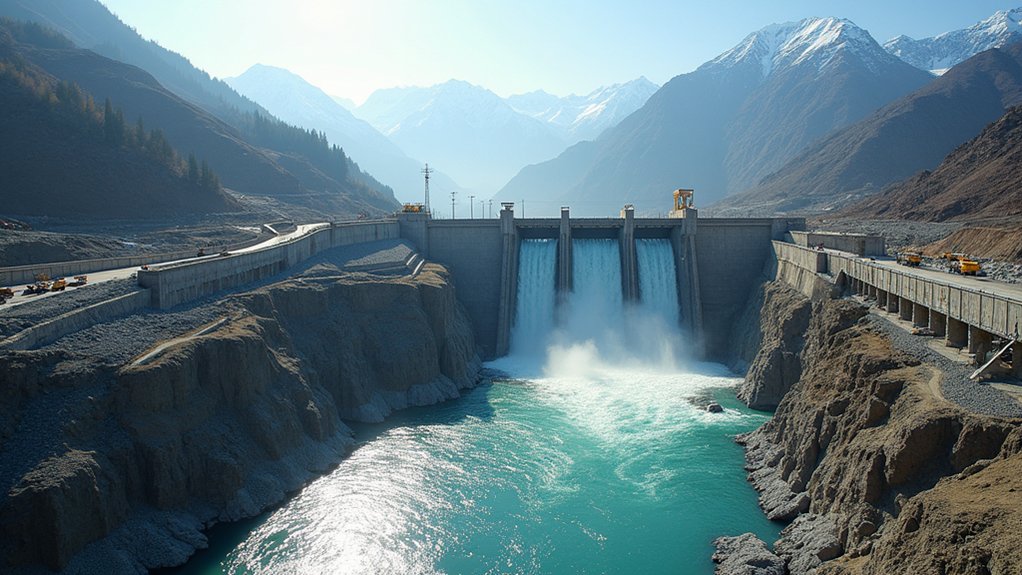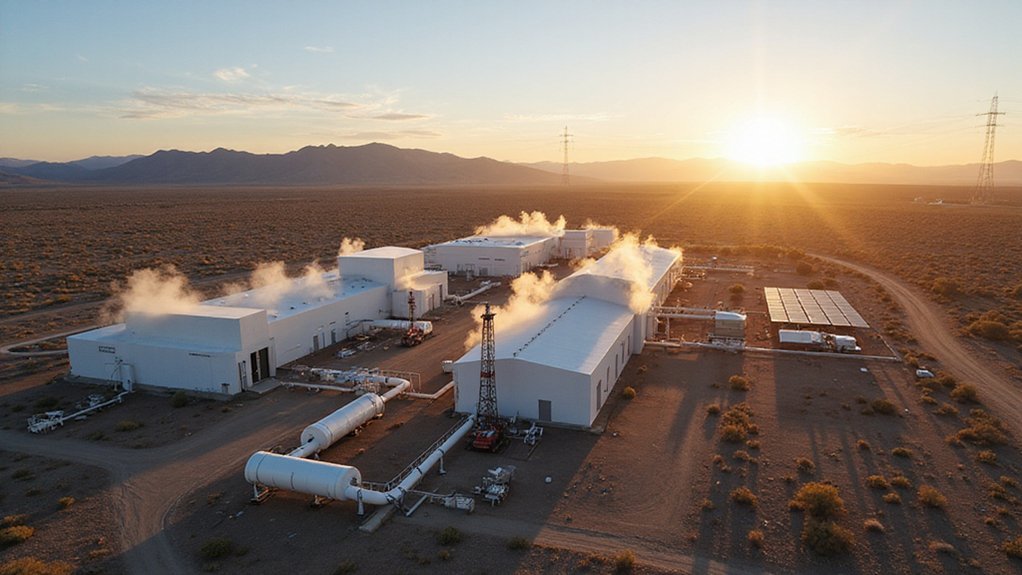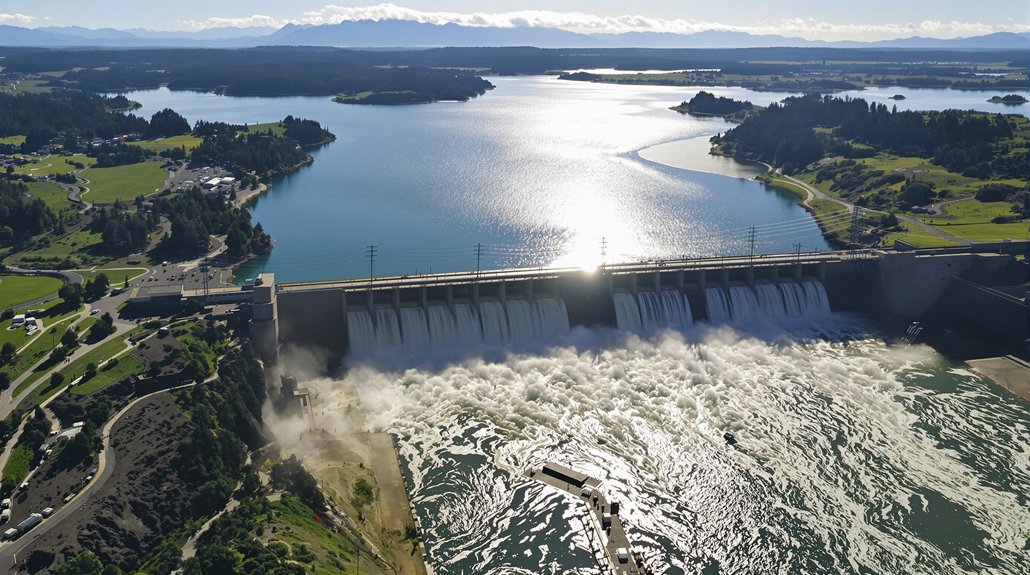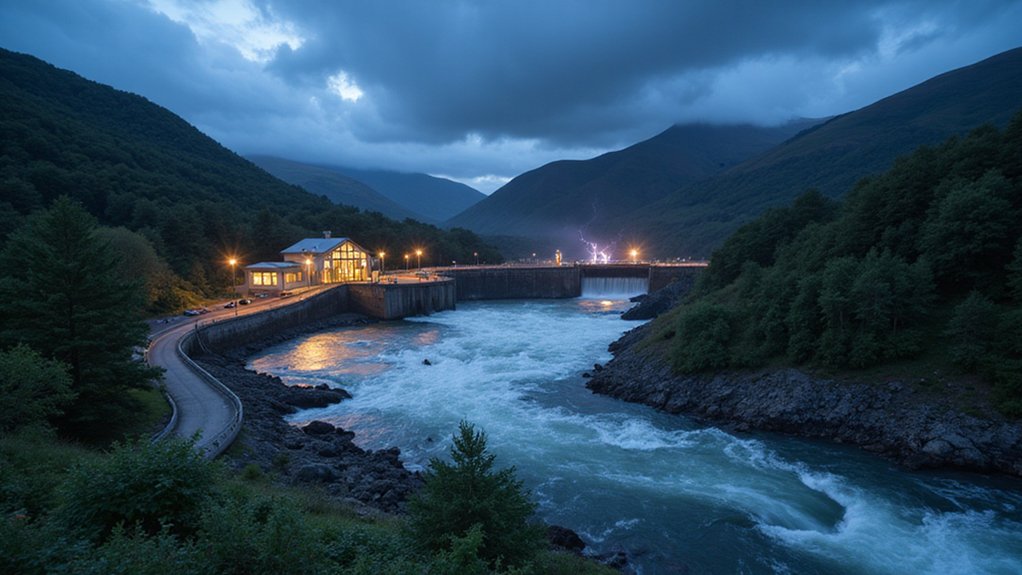Kashmir’s rivers have always been gold mines—just the liquid kind. With over 20,000 MW of untapped hydroelectric potential, J&K sits on enough water power to light up half of North India. Yet for decades, only 3,500 MW has been operational. Talk about leaving money on the table.
Kashmir sits on 20,000 MW of water power while tapping just 3,500 MW—liquid gold left flowing untapped.
But things are changing fast. Real fast. The Chenab, Jhelum, and Ravi rivers are getting the full infrastructure treatment now. Pakal Dul alone will pump out 1,000 MW by September 2026. Kiru adds another 624 MW by March that year. Kwar throws in 540 MW by November. Even tiny Karnah is joining the party with its 12 MW contribution. Ratle’s 850 MW rounds out the construction boom. Much like Pittsburgh’s airport, these hydroelectric projects aim to deliver significant cost savings while reducing carbon emissions.
The old guard isn’t sitting idle either. Salal’s 690 MW has been churning for years. Baglihar runs 900 MW strong on the Chenab. Dulhasti adds 390 MW to the mix. Uri I and II combine for 480 MW on the Jhelum. Even remote Ladakh gets its share with Nimoo Bazgo and Chutak pushing out 70 MW.
The pipeline looks even crazier. Kirthai-II promises 930 MW once technocrats finish their evaluations. Ujh Multipurpose brings 196 MW to the table. JKSPDC identified 14 more projects totaling 738.5 MW. All told, 7,000 MW will come online within 8-10 years. That’s double the current capacity.
This isn’t just about electricity bills. Construction crews need workers. Lots of them. Roads get built to reach dam sites. Power surplus means factories can actually run. Agriculture gets reliable irrigation. Communities get uprooted too—resettlement planning is now a full-time job. The government now deploys IT-enabled monitoring systems to track project progress and prevent the delays that plagued earlier developments.
The timing isn’t coincidental. Post-treaty suspension, India’s water policy shifted into overdrive. Each new dam becomes a bargaining chip in regional negotiations. Border area projects carry extra weight. Energy independence sounds noble, but leverage plays better at negotiating tables.
Kashmir’s liquid gold rush has begun. Whether it brings prosperity or just more complicated politics remains to be seen. But one thing’s certain—those rivers won’t flow untapped much longer.
References
- https://cea.nic.in/wp-content/uploads/hpi/2025/02/State_Profile.pdf
- https://cea.nic.in/wp-content/uploads/hpi/2025/01/Statewise.pdf
- http://www.cspm.gov.in/ocmstemp/project_ind.jk_PROC_TOR
- https://www.constructionworld.in/energy-infrastructure/power-and-renewable-energy/3090-mw-hydropower-projects-underway-in-jk/71635
- https://www.pib.gov.in/PressReleasePage.aspx?PRID=1988259








